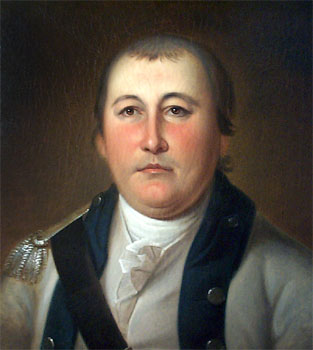
William Washington was a cavalry officer of the Continental Army during the American Revolutionary War, who held a final rank of brigadier general in the newly created United States after the war. Primarily known as a commander of light dragoons, he led mounted troops in a number of notable battles in the Carolinas during the campaigns of 1780 and 1781.

Sir Banastre Tarleton, 1st Baronet was a British general and politician. He is best known as the lieutenant colonel leading the British Legion at the end of the American Revolution. He later served in Portugal and held commands in Ireland and England.

The British Legion was an elite British provincial regiment established during the American Revolutionary War, composed of Loyalist American troops, organized as infantry and cavalry, plus a detachment from the 16th Light Dragoons. The unit was commonly known as Tarleton's Legion, after the British officer who led it on campaign, Lieutenant Colonel Banastre Tarleton. It was a unit the size of a regiment, consisting of artillery, cavalry, and light infantry, and able to operate independently.
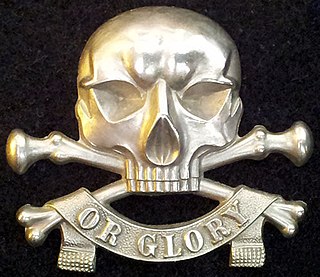
The 17th Lancers (Duke of Cambridge's Own) was a cavalry regiment of the British Army, raised in 1759 and notable for its participation in the Charge of the Light Brigade during the Crimean War. The regiment was amalgamated with the 21st Lancers to form the 17th/21st Lancers in 1922.

The Battle of Cowpens was an engagement during the American Revolutionary War fought on January 17, 1781 near the town of Cowpens, South Carolina, between American Patriot forces under Brigadier General Daniel Morgan and British forces, nearly half American Loyalists, under Lieutenant Colonel Banastre Tarleton, as part of the campaign in the Carolinas. The battle was a turning point in the American reconquest of South Carolina from the British.
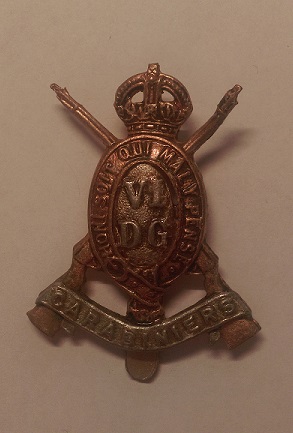
The Carabiniers (6th Dragoon Guards) was a cavalry regiment of the British Army. It was formed in 1685 as the Lord Lumley's Regiment of Horse. It was renamed as His Majesty's 1st Regiment of Carabiniers in 1740, the 3rd Regiment of Horse (Carabiniers) in 1756 and the 6th Regiment of Dragoon Guards in 1788. After two centuries of service, including the First World War, the regiment was amalgamated with the 3rd Dragoon Guards (Prince of Wales's) to form the 3rd/6th Dragoon Guards in 1922.

The 2nd Rhode Island Regiment was authorized on 6 May 1775 under Colonel Daniel Hitchcock in the Rhode Island Army of Observation and was organized on 8 May 1775 as eight companies of volunteers from Providence County of the colony of Rhode Island. As part of a brigade organized under Nathanael Greene, the unit participated in the Siege of Boston during the remainder of 1775. Some elements accompanied Benedict Arnold's expedition to Quebec late in the year. The unit was renamed the 11th Continental Regiment on the first day of 1776.
The 1st Pennsylvania Regiment - originally mustered as the 1st Pennsylvania Rifles; also known as the 1st Continental Line and 1st Continental Regiment, was raised under the command of Colonel William Thompson for service in the Continental Army.
The 3rd Maryland Regiment was an infantry regiment of the Continental Army during the American Revolutionary War. It served from 1776 to 1783, mostly in the Middle Atlantic Region of the conflict.

The 1st Continental Light Dragoons, also known as Bland's Horse, was a mounted regiment of the Continental Army organized between 13 June and 10 September 1776 in Williamsburg, Virginia. It was made up of men from eastern and northern Virginia for service with the Continental Army.
The 2nd Continental Light Dragoons, also known as Sheldon's Horse after Colonel Elisha Sheldon, was commissioned by the Continental Congress on 12 December 1776, and was first mustered at Wethersfield, Connecticut, in March 1777 for service with the Continental Army. The regiment consisted of four troops from Connecticut, one troop each largely from Massachusetts and New Jersey, and two companies of light infantry.
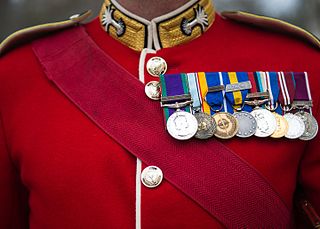
Red coat, also referred to as redcoat or scarlet tunic, is a military garment formerly much used by British infantry servicemen, so customarily that the term became a common synecdoche for the servicemen themselves.

The uniforms of the British Army currently exist in twelve categories ranging from ceremonial uniforms to combat dress. Uniforms in the British Army are specific to the regiment to which a soldier belongs. Full dress presents the most differentiation between units, and there are fewer regimental distinctions between ceremonial dress, service dress, barrack dress and combat dress, though a level of regimental distinction runs throughout.

Stephen Moylan was an Irish-American patriot leader during the American Revolutionary War. He had several positions in the Continental Army, including Muster-Master General, Secretary and Aide to General George Washington, 2nd Quartermaster General, Commander of the Fourth Continental Light Dragoons, and Commander of the Cavalry of the Continental Army.
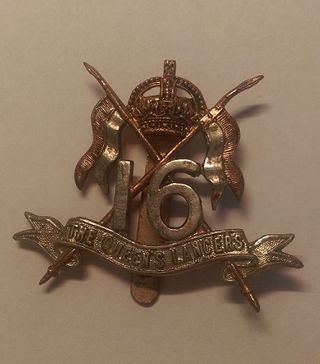
The 16th The Queen's Lancers was a cavalry regiment of the British Army, first raised in 1759. It saw service for two centuries, before being amalgamated with the 5th Royal Irish Lancers to form the 16th/5th Lancers in 1922.

The Queen's Own Yorkshire Dragoons was a yeomanry regiment of the British Army in existence from 1794 to 1956. It was formed as a volunteer cavalry force in 1794 during the French Revolutionary Wars. Its volunteer companies played an active role with the Imperial Yeomanry in the Second Boer War, but opportunities for mounted action were much more restricted during the First World War and it was temporarily converted into a cycle unit. It remained a cavalry regiment throughout the interwar years, and was the last horsed unit of the British Army to see action, in the Syria–Lebanon Campaign of 1941, finally mechanising the following year. It served as motorised infantry in the North African and Italian campaigns of the Second World War. In 1956, it merged with the Yorkshire Hussars and the East Riding of Yorkshire Yeomanry to form the Queen's Own Yorkshire Yeomanry. Its lineage is continued today by A Squadron, the Queen's Own Yeomanry.
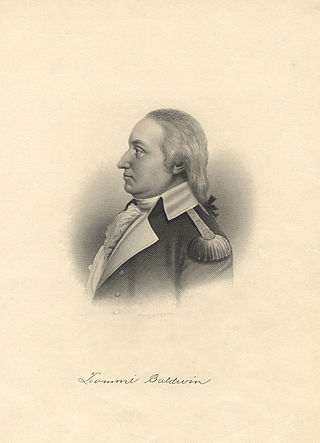
The 26th Continental Regiment was an infantry unit of the Massachusetts Line during the American Revolutionary War. Gerrish's Regiment was raised in the early days of the war, and the regiment underwent name changes as the Continental Army was reorganized in 1776 and 1777. From 1777 onward, the unit was known as the 9th Massachusetts Regiment.
Thruston's Additional Continental Regiment was an American infantry unit that served for a little more than two years in the Continental Army during the American Revolutionary War. Authorized in March 1777, four companies were organized in Virginia during the spring and summer of 1777. George Washington appointed influential Shenandoah Valley political leader Charles Mynn Thruston as colonel in command. The regiment participated in the Philadelphia Campaign in late 1777. One company was detached from the regiment on 4 April 1778 and became part of Hartley's Additional Continental Regiment. The unit was present in the Monmouth Campaign in June 1778. What was left of the regiment was attached to Grayson's Additional Continental Regiment on 15 November 1778. Grayson's and Thruston's Regiments were absorbed by Gist's Additional Continental Regiment on 22 April 1779 and Thruston's Regiment ceased to exist.












